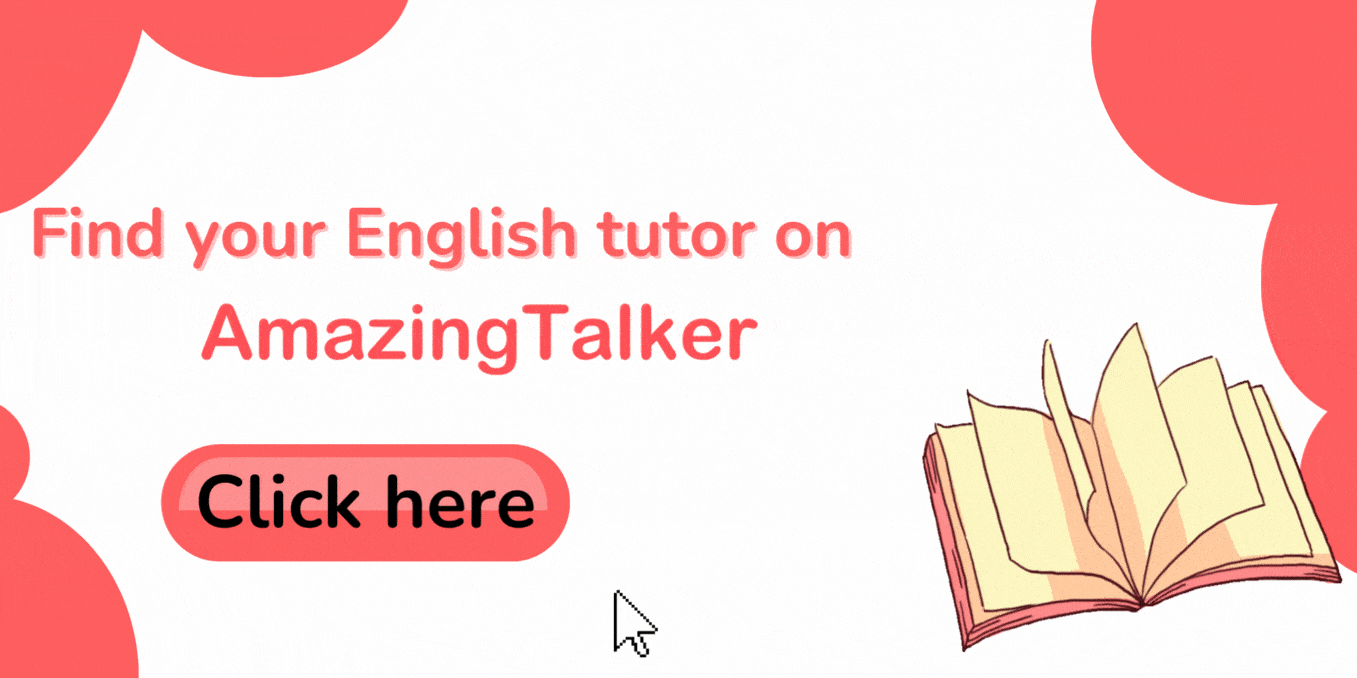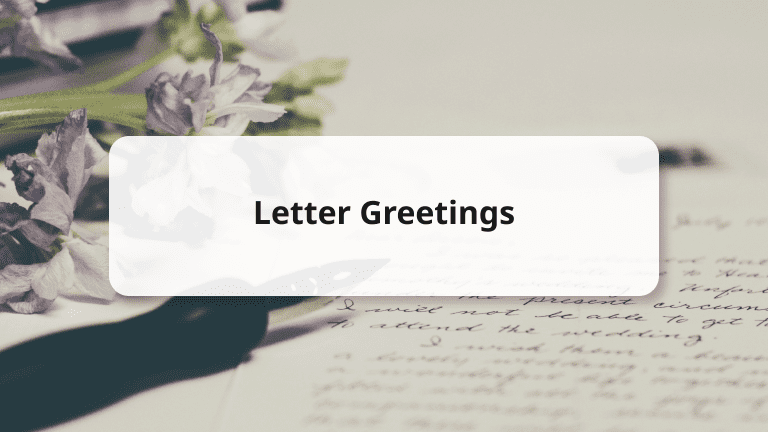Structuring your letters with suitable letter greetings and conclusions for specific people and situations is an essential component in establishing proper correspondence. It is a very important part when learning English writing. Doing this correctly can set up a good tone and the first impression with the person or company you are addressing, as people tend to pay special attention to how they are being addressed. This is why it is important to make sure you do not do this incorrectly.
Is “Hi” too basic for your business letter? Is “Greetings” too formal for the lighter tone you’d like to create with business partners when trying to do business in English? Choosing the right salutations for your letter may not be as straightforward as it seems. So, to make the best first impression and get your recipient’s attention, you need to make sure you are equipped with the best salutations for every type of situation and person.
| Greetings for Personal Letters | Greetings for Business Letters |
| Hi [Name] | Dear [Name] |
| Hello [Name] | To whom it may concern |
| Hey | Greetings |
| Good Morning/Good Day/ Good Afternoon/ Good Evening |
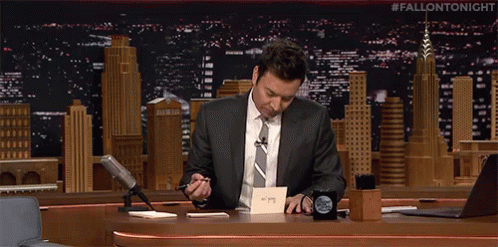
How do you start a greeting in a letter?
There are essentially 2 ways to begin your letter: Formal and Informal. Which one you use is dependent on the situation and the relationship you have with the recipient. For example, you wouldn’t use “Hey!” in a letter addressing your Manager. You also would not use “To whom it may concern” for a letter to your colleague or anyone that you know – even though this is formal, it is still impersonal and may come off as cold!
Examples of Formal Letter Greetings and Letter Salutations
Here are some good formal greetings to use in your letters to create a formal, professional and polite tone in your correspondence with the recipient.
Dear [Name]
This greeting has been used for centuries in all manner of formal correspondence and is highly popular due to its versatile nature to be used in both personal and impersonal situations. Sometimes it can be considered old-fashioned, but it is still a good way to convey a polite and respectful tone while maintaining professionalism with your recipient. You can add “Mr” or “Mrs” to add a more personal touch with your recipient.
Greetings
This is a neutral and polite response that adds more of a warm tone to your correspondence. This is generally used when you do not know your recipient personally or by their name.
Dear Sir or Madam
This is also a commonly used formal salutation in many business letters and emails. However, it is becoming increasingly outdated and less preferred in business correspondences, as it is considered more impersonal. You would really only use this if you do not know who you are talking to and it is your first time talking to them.
To Whom it May Concern
This is typically used in official and very formal correspondences such as notices or other notification letters. These are used when you do not know the person being addressed and are typically directed toward a company or party. This is considered a more outdated greeting and is generally not used anymore as it creates a very authoritative and impersonal tone that may not be received well.
Casual Letter Greetings and Letter Salutations
These casual letter greetings would be used in more informal situations and with people you know well. These would create a warm and relaxed tone between the recipient and yourself.
Hi [Name]
This is the most simple and direct way to address someone while still remaining polite – regardless of whether you know them personally or not. This is more commonly used in informal and casual greetings instead of formal ones.
Hello [Name]
This is a suitable alternative to “Hi” and maintains the correct balance between formality and familiarity between your recipient and yourself. It is a more versatile greeting that can be used in both formal and informal greetings – but is generally more on the informal side.
Hey [Name]
This salutation is a casual and relaxed way to greet people you know very well. This is typically between friends or close colleagues. It is similar to the way you would start a text message conversation.
[Name]
This is a very straightforward and casual way to start an email and is mainly used with people you know very well and have already established a personal relationship and understanding with.
Not Just Letter Greetings: How to Correctly End a Letter?
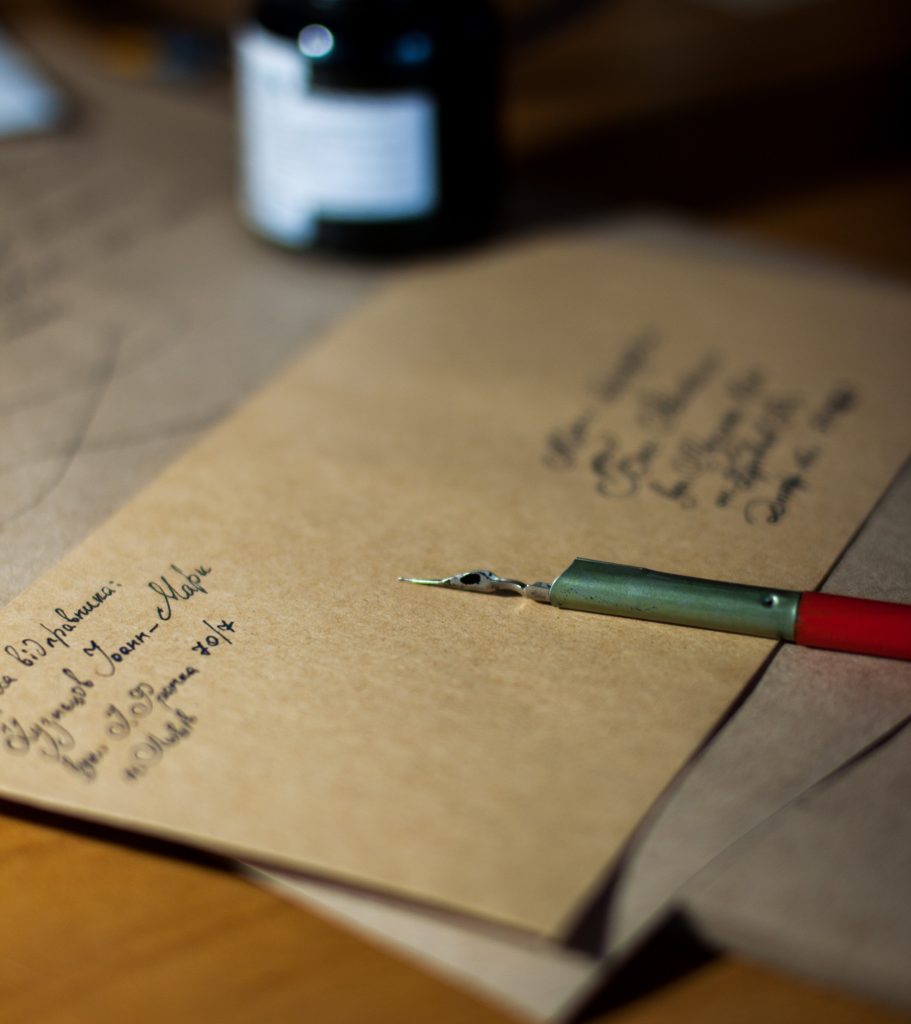
Just like letter greetings, you would definitely want to end your letter just as well as your initial salutations – consistency is key! So always make sure that you maintain the same tone and level of formality in your ending, as it was in your greeting.
Formal Letter Endings
Here are a few formal letter endings to round off your letter with professionalism and respect for your recipient:
Yours Sincerely/ Sincerely
These are used when you have used a greeting such as “Dear” or “To whom it may concern”. It maintains a formal and respectful tone from the beginning of your letter all the way to your parting words.
Respectfully Yours/ Respectfully
This is a more formal and official way to end your letter and conveys more professional and respectful tones in your correspondence. This is typically used in correspondence at more senior levels.
Kind Regards/ Warm Regards
This is a more polite and warmer way to conclude your correspondence, making sure you respectfully acknowledge your recipient. This creates a better relationship with the recipient and is more commonly used to end most letters and emails.
Best Wishes
This is a less formal but still business-like way to end your letter. It is polite and creates a good standing between your recipient and yourself.
Casual Letter Endings
Here are a few more casual and relaxed ways to end your letters with your recipient. These are typically used for more friendly recipients that you are close with.
Best
This is used for friends and colleagues that you are close to. Although more informal, it is still polite and respectful – making it a neutral and versatile way to end many letters and emails.
Cheers
This is a relaxed way to end more casual correspondence between friends and close colleagues. It has a positive tone and maintains a good relationship with your recipient.
Hugs
This is a friendly and informal way to end off your letters and emails of a casual nature. These are typically used between close friends.
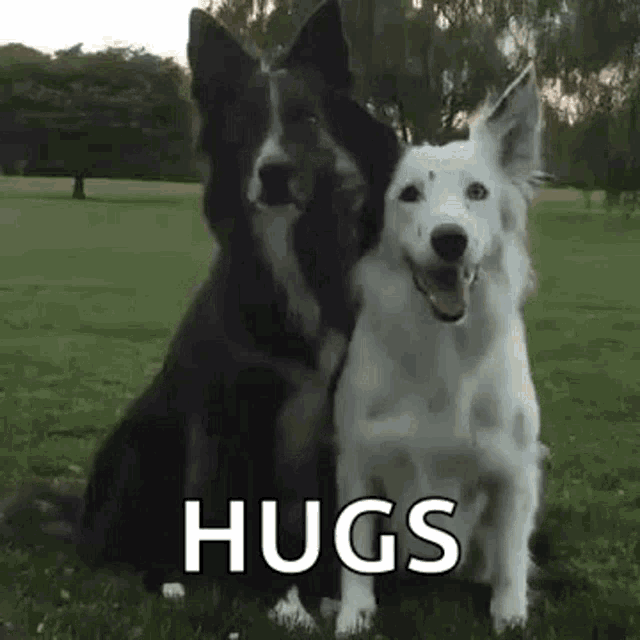
How to Start your Cover Letter

A cover letter is a one-page document that you submit along with your CV when applying for jobs. This letter is intended to concisely introduce yourself and summarize your professional background to a potential employee. It is important to start your cover letter or application with your essential details such as your:
- Full Name
- Phone Number
- Date
- Links to your relevant online social media profiles such as Linked In
Thereafter you would include the details of the person and company you are applying to. You should then begin your letter with a suitable salutation that is formal and respectful. It is good if you can find the details of the contact person through some research, but if you cannot, then you can use a general greeting such as “Dear Sir/Madam”.

What to Keep in Mind About Letter Greetings
- Use which letter greeting depends on the relationship between letter writers and receivers
- Avoid using casual letter greetings in business or official emails and letters
- To whom it may concern and Dear Sir/Madam are outdated letter greetings
Common Questions for Letter Greetings
For casual purposes, you just use Hi, Hello; for more official use, simply Dear or Greetings.
The most common one will be Greetings or Dear, both can be used in formal correspondences.
Good Letter Greetings Always Lead to a Good Start
We hope that this article has given you the top tips and skills to write great business emails and cover letters. You should now be equipped with various greetings and closings for both formal and casual correspondences. You should also be able to confidently write competent cover letters to make sure you nail those job applications!
Come on over to AmazingTalker so you can learn more great and helpful tips and skills to help you improve your communication skills in both your personal and professional life. Check out more articles like the correct way to use “the” here!
